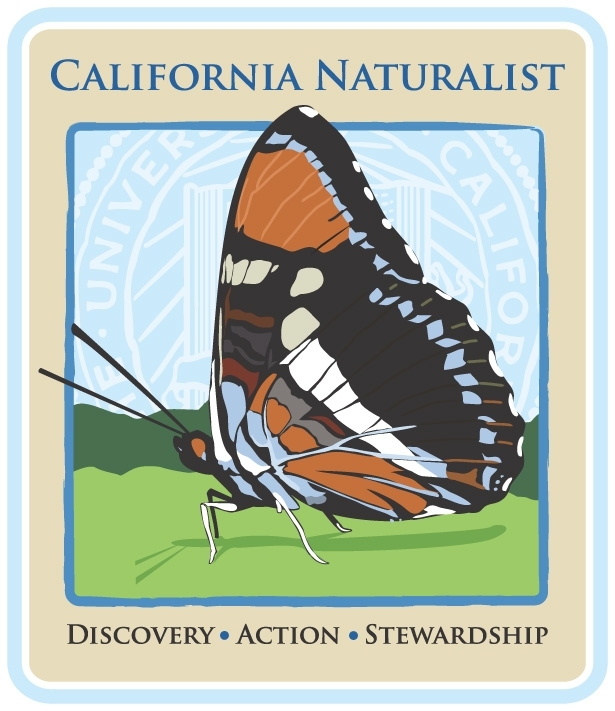From the UC Blogosphere...
Oakworm Moth
I notice moths flying around my oak tree, should I be concerned? Ann...
A Day in the Life of a Single Worker Bee
A day in the life of a single worker bee... A honey bee tumbles off the flowering catmint (Nepeta) and struggles to right...
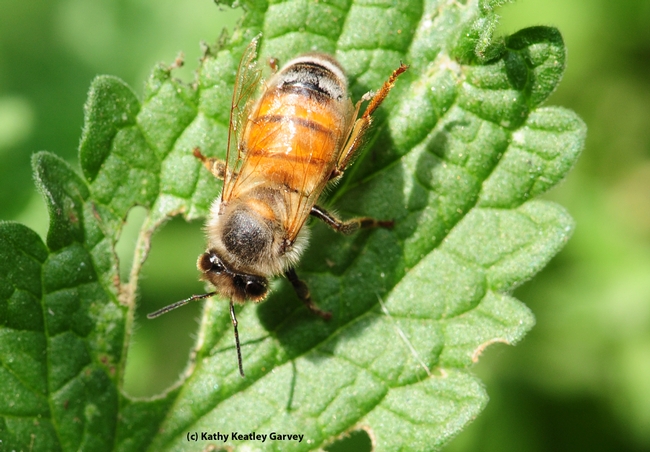
Honey bee tumbles off a flowering catmint and lands on a leaf. (Photo by Kathy Keatley Garvey)
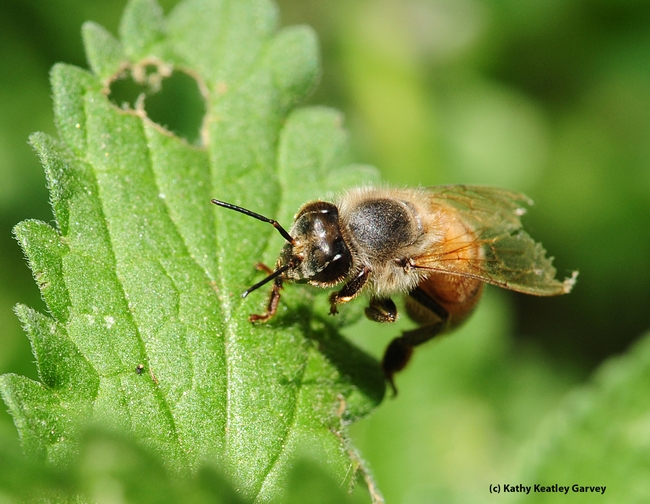
Tattered wings of a honey bee. (Photo by Kathy Keatley Garvey)
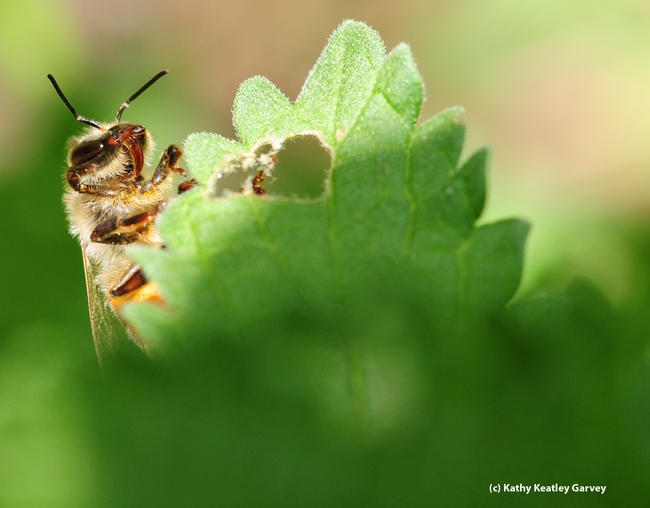
Honey bee thrusts out her proboscis (tongue). (Photo by Kathy Keatley Garvey)
Cuts to research funding are 'not sustainable'
The article was written to bring attention to the fact that, despite the need to produce so much food in coming years, funds for agricultural research are being cut.
In December, President Obama’s Council of Advisors on Science and Technology recommended that the United States increase its investment in agricultural research by $700 million per year. Instead, the sequester resulted in cuts of approximately 7.6 percent.
"This is simply not sustainable," the op-ed authors note.
Read the article in the Modesto Bee.
Sparkle and Shine!
It's not "Rise and Shine!" any more. It's "Sparkle and Shine." "Sparkle and Shine," a yellow rose related to the Julia...
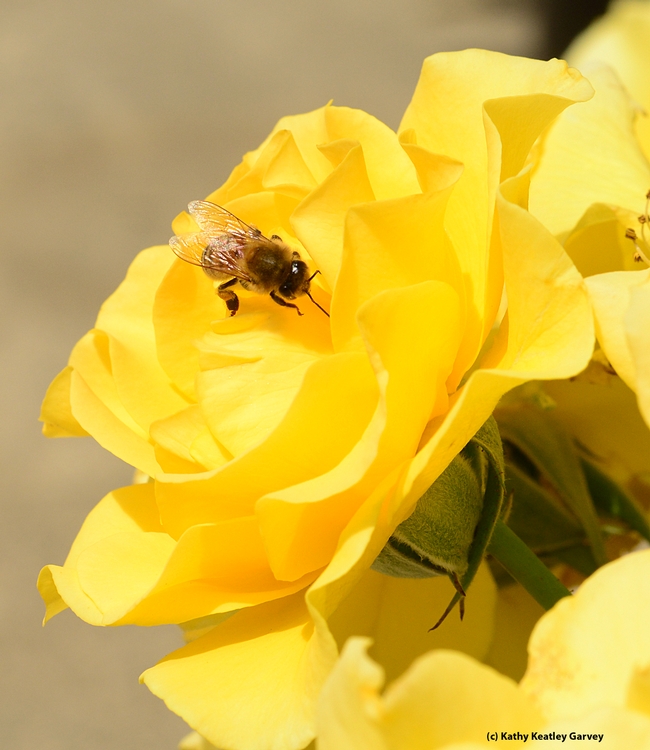
Honey bee foraging on a yellow rose, "Sparkle and Shine!" (Photo by Kathy Keatley Garvey)
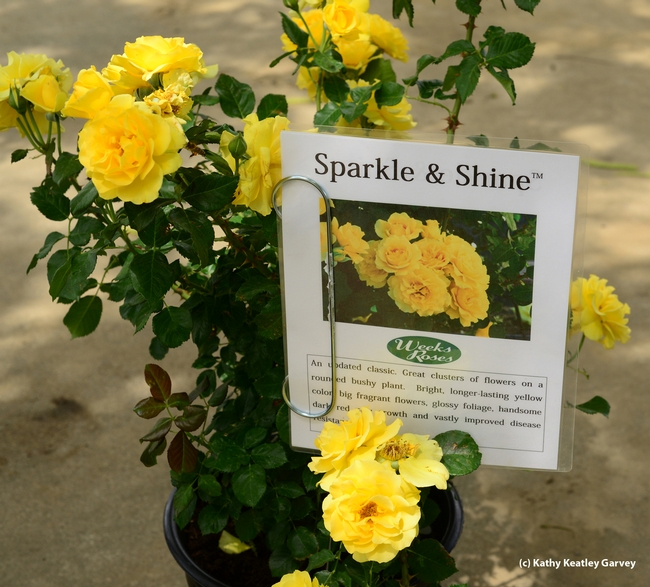
A sign tells it all. (Photo by Kathy Keatley Garvey)
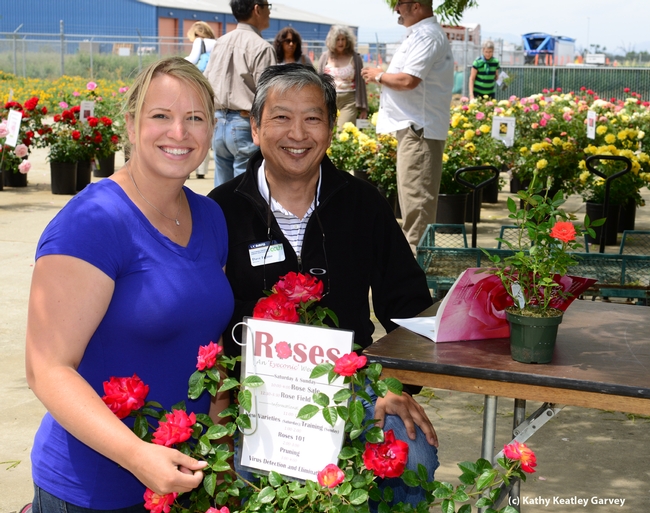
Dave Fujino, executive director of the California Center for Urban Horticulture with Missy Gable, newly selected statewide director of the UC Master Gardener Program. (Photo by Kathy Keatley Garvey)
California Naturalists training at UC research center
The nearly 30-member 2013 class of California Naturalists in Mendocino County participated in a field day Saturday at the UC Hopland Research and Extension Center, reported the Ukiah Daily Journal.
The University of California's California Naturalist program aims to host courses around the state to train outdoor enthusiasts on a variety of topics, such as plants, animals, water resources and geology. The Mendocino Program focuses on the local mixed oak woodland.
"The goal of the program is to create a group of stewards of our lands and water resources," said Deborah Stanger Edelman, the course's lead instructor. "To give people a background on what is unique about California, and also provide the tools for communicating that knowledge to other people."




